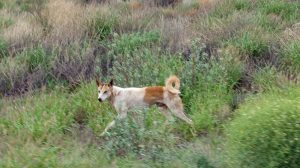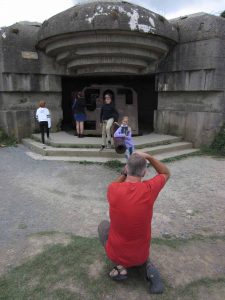
by Alex Bowles | Nov 26, 2017 | Alex, Australia
Australia is home to many interesting animals. The kangaroo, the most iconic Australian animal, lives in the desert and forest and is the largest marsupial. The kangaroo is also a delicacy. I have been eating kangaroo in every form possible and in my opinion it tastes like beef. There is even a species of kangaroo known as the Tree Kangaroo that lives in Indonesia and has been seen to jump off trees 18 meters or 60 feet. The wallaby is a smaller version of a kangaroo that will sometimes breed with kangaroos creating wallaroos. Another iconic animal is the koala. The koala lives on a diet of eucalyptus leaves and sleeps for 18-20 hours of the day. The koala has three fingers and two thumbs to help it climb trees. The most bizarre of Australia’s creatures is the platypus. The platypus is a mammal with a bill like a duck and a tail like a beaver, the platypus is the only mammal to lay eggs. Crocodiles live in the Northern Territory and can live in billabongs (swamps) and the ocean. They normally grow to a length of 6 meters or 20 feet and can jump out of the water to catch food. The cockatoo is a white bird with a yellow crest that can fold off the head. A displayed crest means that the bird is scared or curious to make it seem bigger. The dingo is a relative of the dog that can live in the harshest areas of the Australian Outback. Dingos will mate for life and will sometimes mourn themselves to death after the loss of their mate. Camels are originally from the Middle East but can only be found wild in Australia. The camels are dromedary camels and were imported in the mid-1800’s. People now estimate there are about 1,000,000 wild camels roaming the Outback.

by Alex Bowles | Nov 20, 2017 | Alex, Australia
One of the most predominant animals at Heron Island is the green sea turtle. When they are born they make a rush to the water where about 10% will be eaten. After getting to the water they must get through the reef where about 75% are eaten. After they make it to the open sea they will spend ten years drifting until they are ten years old and the size of a dinner plate. When they reach that size, they go to a reef where they will spend the next ten years of their life. After those ten years, they go back to the open ocean and will return to the same beach or within 60 kilometers of the beach to lay their eggs. After the females lay their eggs at high tide in the night they will go back to the water and in a short period of time lay another batch of eggs. Each batch of eggs will have about between 150 eggs to 800 eggs. In one breeding season, one female can lay up to six batches of eggs.

by Alex Bowles | Aug 6, 2017 | Alex, Scotland
Edinburgh has a very rich history. It has been the capital of Scotland for 300 years, but people have been living in the city since 8500 B.C. Not known to many visitors of this amazing city is another city where people lived under the streets and bridges. To see the underground city, we booked a tour with Mercat tours–mercat being the old Scottish word for market. To get to the entrance we went through a small alleyway where our guide, Artemis, told us about the nasty buckets. Edinburgh was not built near a river so plumbing did not exist for quite some time. Each family shared a bucket that became known as the nasty bucket. To empty it they poured the contents out of the window at night after yelling “Attention à l’eau,!” The only way to stop it was to yell and wave your hands. Knowing that the buildings in Edinburgh at that time were up to 14 stories tall, there was a lot of nasty raining down and filling the streets. After that, we arrived at the entrance to the underground city. After traveling down a steep flight of stairs we entered the underground city. In the first room, Artemis told us about how they kept a record of the paranormal activity in the rooms. In the room where we stood, the ghost of an aristocrat was often sighted standing in the doorway looking at the other doorway as if it were waiting for someone. In the next room, The Watcher was first sighted. Named because all he did was watch–at least in the beginning. Artemis then gave us a short history in the next room. At first, all he did was watch the group, occasionally walking around to get a better look at everyone in the group. That peaceful version disappeared and he started running through the halls. We heard what sounded like footsteps and Artemis told us it was just another group entering the rooms. After that we entered the next room, the second most active room in the underground city. In it, a small man would smile and wave at groups passing through. He never hurt anyone but some people say they heard rocks being thrown at the walls. Another spirit was present every now and then, a small ten-year-old boy that would hold hands or untie your shoes as a joke. This room got the nickname the safe room because the watcher was never seen inside the room but would look inside. The next room was believed to be a bar because oyster shells were found inside with glass bottle-shards. We all crowded into the next room except for Artemis. It was a small room and the most active. She told us this was believed to be The Watchers lair. In this room, people left the room with scratches and bruises from unknown sources. One of the sightings had The Watcher grab a person around the neck and yell at her. Artemis had never seen a ghost in the rooms but another group she had two weeks before our tour said they saw something walk past her and look over her shoulder.

Underground city

by Alex Bowles | Jul 28, 2017 | Alex, France

Longues-sur-Mer battery, between the landing beaches Omaha and Gold.
I have always wanted to go to Normandy for the WWII history, but when I arrived I was amazed by how much more there was to learn. We took a train from Paris to Caen, then we drove from Caen to Bayeux. When we arrived we took a tour from the company Overlord Tour (five-star service!). First, we went to one of the three British sectors to see the German battlements, each housing a huge cannon. Only one of the three is destroyed because after Normandy we put AA (anti-aircraft) shells and one night they exploded. After that, we went to Omaha Beach. There we saw the huge difference between high tide and low tide. There was a huge controversy about whether to land at high tide or low tide. The decision was finalized by the German defenses: they would have to land at low tide. If they didn’t, more of the first wave would have died because of the hidden traps laid by the Germans. After that, we went to the American graveyard and saw the over 9000 graves overlooking Omaha beach, all of the graves facing home. Finally, we went to Point du Hoc, the place where the Rangers, America’s elite soldiers, climbed a cliff and took a defensive point with strategic value. When they arrived at the top they found out the gun wasn’t there so they searched elsewhere and found the guns and destroyed them. After the tour, we went to a castle to stay the night. While there we learned that the Germans had tanks at our castle before D-Day but a commander ordered them to go to the beaches but they never arrived. If the Germans would have stayed at Chateau Columbieres, chances are that the castle would have been destroyed in the fighting.

by Alex Bowles | Jul 26, 2017 | Alex, France
Versailles original was a hunting cabin created by Louis XIII. When looking at a picture of Versailles the building with the gold leaf was the original cabin. After Louis XIII died his son, Louis XIV added on to Versailles, basically everything that doesn’t have gold leaf he added. Louis XIV had Greek statues and paintings put on and around the building. To impress guests he had the hall of mirrors built but no Frech mirror maker could make mirrors good enough for his satisfaction so he had Venetian mirror markers show the Franch how to make mirrors. As a welcome home gift for the Venetian mirror makers, their king sentenced them to death because mirror-making had been a Venetian secret. When Louis XIV died at the old age of 72 he passed the throne on to his great-grand child Louis XV (he outlived his son and grandson!). He did not add to Versailles. During his reign, he made it so everyone, instead of just royals, could bathe in the pond. After Louis XV passed away his son Louis XVI took the throne. His wife Marie Antoinette had a small peasant village built next to her small house so she could play peasant. At her small house, all of the servant passages were hidden so she could live a “normal life”. Because the couple didn’t produce an heir for a while an architect build a pavilion to make Louis want to have a child. Inside the pavilion is a statue of Cupid turning Hercules’ club into a bow and holding Hercules’ armor and shield.

Selfie in front of the original “hunting lodge”, Versailles








